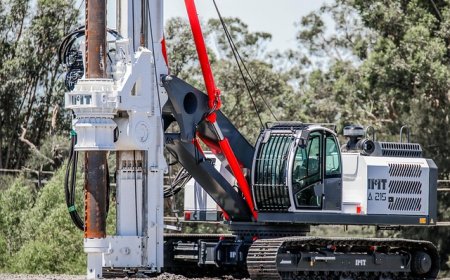How to Check Terraform State
How to Check Terraform State Terraform is one of the most widely adopted infrastructure-as-code (IaC) tools in modern DevOps environments. It enables teams to define, provision, and manage cloud and on-premises infrastructure using declarative configuration files. At the heart of Terraform’s functionality lies the Terraform state —a critical, internal data structure that tracks the real-world reso
How to Check Terraform State
Terraform is one of the most widely adopted infrastructure-as-code (IaC) tools in modern DevOps environments. It enables teams to define, provision, and manage cloud and on-premises infrastructure using declarative configuration files. At the heart of Terraform’s functionality lies the Terraform state—a critical, internal data structure that tracks the real-world resources Terraform has created and their current configuration. Without accurate state management, Terraform cannot reliably plan changes, detect drift, or ensure infrastructure consistency.
Knowing how to check Terraform state is not merely a technical skill—it’s a fundamental requirement for maintaining reliable, scalable, and secure infrastructure. Whether you’re debugging a failed deployment, auditing resource changes, or troubleshooting resource drift, understanding how to inspect and interpret your Terraform state is essential. This guide provides a comprehensive, step-by-step walkthrough on how to check Terraform state effectively, along with best practices, tools, real-world examples, and answers to frequently asked questions.
Step-by-Step Guide
Understanding Terraform State
Before diving into how to check Terraform state, it’s vital to understand what it is and how it works. The Terraform state is a JSON-formatted file (typically named terraform.tfstate) that maps your configuration to real-world resources. It stores:
- Resource IDs (e.g., AWS instance IDs, Azure VM names)
- Resource attributes (IP addresses, tags, sizes, etc.)
- Dependencies between resources
- Metadata like timestamps and provider configurations
Terraform uses this state file to determine what actions to take during plan and apply operations. If the state becomes corrupted, outdated, or missing, Terraform may attempt to recreate resources, delete existing ones, or fail entirely.
Locating Your Terraform State File
The location of your state file depends on your backend configuration. By default, Terraform stores state locally in the same directory as your configuration files. However, in production environments, state is typically stored remotely using a backend such as Amazon S3, Azure Blob Storage, Google Cloud Storage, or HashiCorp Consul.
To determine where your state is stored, run:
terraform state list
If this command returns a list of resources, your state is accessible. If it returns an error, you may need to configure your backend first.
To view your current backend configuration, run:
terraform backend config
This will display the backend type and settings. If you’re using a remote backend, the state file is stored remotely and accessed via the configured provider. Local state files are usually found in the root directory of your Terraform project as terraform.tfstate.
Viewing the Full State File
To inspect the entire state file in its raw JSON format, use:
terraform show
This command displays the current state in a human-readable format, including resource types, IDs, and attributes. It’s useful for quick overviews and debugging.
For the full JSON output (including metadata and internal state fields), use:
terraform show -json
This outputs a complete JSON object that can be parsed programmatically or imported into tools for analysis. Be cautious when sharing this output—it may contain sensitive data such as passwords, API keys, or private IPs.
Listing Resources in State
To see a concise list of all resources currently tracked in your state, run:
terraform state list
This returns a flat list of resource addresses, such as:
aws_instance.web_server
aws_security_group.allow_ssh
module.vpc.aws_vpc.main
This list is invaluable when you need to target specific resources for operations like terraform state rm or terraform state mv.
Inspecting Individual Resource State
To examine the detailed state of a single resource, use:
terraform state show <resource_address>
For example:
terraform state show aws_instance.web_server
This outputs a detailed breakdown of the resource’s current state, including all attributes such as:
- Instance type
- Public/private IP
- Security group associations
- Tags
- AMI ID
- Availability zone
This is the most common method for verifying whether a resource was created correctly or has drifted from its intended configuration.
Checking State for Drift
Resource drift occurs when the real-world state of a resource diverges from what’s recorded in the Terraform state file. This can happen due to manual changes, other automation tools, or misconfigurations.
To detect drift, run:
terraform plan
Terraform compares the state file with your configuration files and the actual state of resources in the cloud provider. If drift is detected, Terraform will show “+ to create,” “- to destroy,” or “~ to update” actions—even if you haven’t modified your configuration.
Example output:
~ resource "aws_instance" "web_server" {
ami = "ami-0abcdef1234567890"
~ instance_type = "t2.micro" -> "t2.small"
tags = {
"Name" = "web-server"
}
}
This indicates that the instance type was manually changed from t2.micro to t2.small outside of Terraform. The plan shows Terraform intends to revert this change on the next apply.
Exporting and Backing Up State
Always back up your state file before making major changes. To export the state to a local file:
terraform state pull > terraform.tfstate.backup
This command retrieves the current state from the backend (remote or local) and saves it to a file. This is especially important before running terraform destroy or modifying state manually.
If you’re using a remote backend, you can also use provider-specific tools to download the state file directly—for example, using AWS CLI:
aws s3 cp s3://my-terraform-state-bucket/terraform.tfstate ./terraform.tfstate.backup
Using State with Workspaces
Workspaces allow you to manage multiple environments (e.g., dev, staging, prod) from the same configuration. Each workspace has its own state file.
To list available workspaces:
terraform workspace list
To switch to a specific workspace:
terraform workspace select staging
To check the state for the current workspace:
terraform state list
Always confirm your active workspace before inspecting or modifying state, as running commands in the wrong workspace can lead to unintended changes.
Interactive State Exploration with terraform-docs and tfstate-viewer
For teams managing complex infrastructures, visualizing state can improve clarity. Tools like tfstate-viewer provide a web-based interface to explore your state file interactively.
To use tfstate-viewer:
- Download the binary from GitHub
- Run:
./tfstate-viewer --file terraform.tfstate - Open
http://localhost:8080in your browser
The interface displays a tree view of resources, allowing you to expand nodes and inspect attributes without parsing JSON manually.
Verifying State Locking
State locking prevents concurrent modifications that could corrupt state. If you’re using a remote backend like S3 with DynamoDB, Terraform automatically locks the state during operations.
To check if state is currently locked:
terraform state list
If the command hangs or returns a “LockInfo” error, state is locked. You can inspect the lock status directly in your backend—for example, in DynamoDB, check the terraform.tfstate.lock table.
To release a stale lock (only if you’re certain no other process is using it):
terraform force-unlock <lock_id>
Use this command with extreme caution. Unlocking state while another process is writing to it can cause irreversible corruption.
Best Practices
Always Use Remote State
Never rely on local state files in team or production environments. Local state is prone to loss, inconsistency, and conflicts. Use a remote backend such as:
- Amazon S3 + DynamoDB (for AWS)
- Azure Blob Storage + Locks
- Google Cloud Storage + Locking
- HashiCorp Consul
- Terraform Cloud or Enterprise
Remote backends provide:
- Centralized state management
- Automatic locking
- Versioning and audit trails
- Access control via IAM or RBAC
Enable State Versioning
If using S3, enable versioning on your state bucket. This allows you to restore previous state files if corruption or accidental deletion occurs.
To enable versioning via AWS CLI:
aws s3api put-bucket-versioning --bucket my-terraform-state-bucket --versioning-configuration Status=Enabled
Restrict Access to State Files
State files often contain sensitive information. Apply the principle of least privilege:
- Limit read/write access to state buckets to only necessary roles
- Use IAM policies to restrict access by IP or MFA
- Never commit state files to version control (add
terraform.tfstate*to.gitignore)
Regularly Audit State
Integrate state checks into your CI/CD pipeline. For example, add a step that runs:
terraform plan -detailed-exitcode
and fails the build if drift is detected. This ensures infrastructure remains aligned with code.
Document State Changes
When you manually modify state using terraform state rm or terraform state mv, document the reason in your change log. These operations bypass Terraform’s normal planning process and can introduce risk.
Use Modules to Reduce State Complexity
Large monolithic configurations lead to bloated state files. Break infrastructure into reusable modules. Each module manages its own state subset, improving readability and reducing the risk of conflicts.
Monitor State Size
State files can grow large over time, especially with many resources or nested modules. Large state files slow down operations and increase the risk of timeouts. Regularly clean up unused resources and consider splitting state across environments or teams.
Test State Operations in Isolation
Before modifying state in production, test commands like terraform state rm or terraform state mv in a staging environment. Always back up state before making changes.
Automate State Backups
Set up scheduled backups of your state file using your cloud provider’s tools. For example, use AWS Lambda to copy S3 state files to a secondary bucket every 24 hours.
Tools and Resources
Official Terraform Tools
- terraform show – Displays the current state in human-readable format
- terraform state list – Lists all resources tracked in state
- terraform state show – Displays detailed state for a single resource
- terraform state pull – Downloads the latest state from the backend
- terraform state push – Uploads a local state file to the backend (use with caution)
- terraform state rm – Removes a resource from state (does not destroy it)
- terraform state mv – Moves a resource from one address to another
Third-Party Tools
tfstate-viewer
A web-based GUI for visualizing Terraform state files. Ideal for teams unfamiliar with JSON or CLI output. Supports filtering, searching, and exporting. Available at https://github.com/cn-terraform/tfstate-viewer.
terragrunt
A thin wrapper around Terraform that enforces best practices, including remote state management and DRY configurations. Terragrunt automatically configures remote backends and can help standardize state inspection workflows across teams.
Checkov
An open-source static code analyzer for Terraform. While primarily used for security scanning, Checkov can also detect misconfigurations in state usage, such as unencrypted state storage or missing versioning.
Terraform Cloud
HashiCorp’s hosted service for Terraform that provides built-in state management, versioning, collaboration, and audit logs. It includes a web UI to view state changes, compare runs, and revert to previous states.
Atlantis
An open-source automation tool that integrates with GitHub, GitLab, and Bitbucket. It runs terraform plan on pull requests and displays drift detection results directly in the PR, enabling team reviews before applying changes.
Cloud Custodian
Can be used alongside Terraform to audit cloud resources against state. For example, it can flag AWS instances that exist but are not tracked in Terraform state, helping identify drift.
Learning Resources
- HashiCorp Terraform State Documentation
- HashiCorp Learn: Managing State
- AWS Provider GitHub – For provider-specific state behavior
- Terraform Best Practices – Community-driven guide
Real Examples
Example 1: Detecting Drift in an AWS EC2 Instance
Scenario: A developer manually changed the instance type of an EC2 instance from t2.micro to t2.small via the AWS Console. Your team uses Terraform to manage infrastructure.
Step 1: Run terraform plan
terraform plan
Output:
~ resource "aws_instance" "web_server" {
ami = "ami-0abcdef1234567890"
~ instance_type = "t2.micro" -> "t2.small"
tags = {
"Name" = "web-server"
}
}
Step 2: Verify the current state of the resource:
terraform state show aws_instance.web_server
Output includes:
instance_type = "t2.micro"
Step 3: Confirm the actual AWS instance state:
aws ec2 describe-instances --instance-ids i-0abcdef1234567890 --query 'Reservations[0].Instances[0].InstanceType' --output text
Output:
t2.small
Conclusion: The state file is outdated. The resource has drifted. To resolve, either:
- Update your Terraform configuration to match the new instance type and run
terraform apply - Revert the instance type manually and keep state in sync
Example 2: Recovering from Accidental State Deletion
Scenario: A team member accidentally deleted the local terraform.tfstate file. Remote state is enabled on S3.
Step 1: Confirm remote state is configured:
terraform backend config
Output:
bucket = "my-terraform-state-bucket"
key = "prod/terraform.tfstate"
region = "us-east-1"
Step 2: Pull the latest state from S3:
terraform state pull > terraform.tfstate
Step 3: Verify the state was restored:
terraform state list
Output now shows all expected resources.
Step 4: Run a dry-run plan to ensure no unexpected changes:
terraform plan
If no changes are proposed, state is restored successfully.
Example 3: Moving a Resource Between Modules
Scenario: You’ve refactored your infrastructure to move a security group from a standalone resource into a reusable VPC module.
Before:
resource "aws_security_group" "allow_ssh" { ... }
After:
module "vpc" {
source = "./modules/vpc"
}
The resource is now referenced as module.vpc.aws_security_group.allow_ssh.
Step 1: List current state:
terraform state list
Output includes:
aws_security_group.allow_ssh
Step 2: Move the resource:
terraform state mv aws_security_group.allow_ssh module.vpc.aws_security_group.allow_ssh
Step 3: Verify the move:
terraform state list
Output now shows:
module.vpc.aws_security_group.allow_ssh
Step 4: Run terraform plan to confirm no infrastructure changes are triggered.
Example 4: Cleaning Up Orphaned State Entries
Scenario: You manually deleted an S3 bucket via the AWS Console, but Terraform still tracks it in state.
Step 1: List resources:
terraform state list
Output includes:
aws_s3_bucket.my_bucket
Step 2: Run terraform plan—Terraform will show it wants to recreate the bucket.
Step 3: Remove the resource from state (but leave it deleted in AWS):
terraform state rm aws_s3_bucket.my_bucket
Step 4: Run terraform plan again. No changes should be proposed.
Step 5: Update your configuration to remove the resource definition to avoid future confusion.
FAQs
What happens if I lose my Terraform state file?
If you lose your state file and don’t have a backup, Terraform can no longer track your infrastructure. This means:
- Running
terraform applymay attempt to recreate all resources - Running
terraform destroywill fail or do nothing - You risk creating duplicate resources and incurring unexpected costs
Recovery options include:
- Restoring from a backup
- Using
terraform importto re-associate existing resources with configuration - Manually recreating the state file (not recommended for production)
Can I edit the Terraform state file manually?
Technically yes—but you should never do so unless absolutely necessary. Manual edits can corrupt the state and cause Terraform to behave unpredictably. Always use terraform state mv, terraform state rm, or terraform state pull/push to modify state. If you must edit the JSON directly, back up the file first and test changes in a non-production environment.
Why does Terraform show changes when I haven’t modified my code?
This is called resource drift. It occurs when changes are made to infrastructure outside of Terraform—via the cloud provider’s UI, CLI, or another automation tool. Always investigate drift before applying changes. Use terraform plan to see what’s changed, then decide whether to accept the drift (update config) or revert it (update cloud resources).
How often should I back up Terraform state?
In production environments, back up state daily or after every successful apply. Enable versioning on your remote backend and consider automated scripts to copy state to an archive bucket. For critical systems, consider hourly backups during active deployments.
Can I use Terraform state across multiple clouds?
Yes. Terraform supports multi-cloud configurations using multiple provider blocks. Each provider manages its own state subset, but they are tracked in a single state file. Be cautious—cross-cloud dependencies can increase complexity. Consider splitting state by cloud using workspaces or separate Terraform configurations.
Is it safe to share my Terraform state file?
No. State files often contain sensitive data such as private IPs, passwords, API keys, and ARNs. Never commit state files to version control. Avoid sharing them via email or messaging apps. If you need to share state for debugging, use terraform show and redact sensitive values manually.
How do I know if my state is corrupted?
Signs of corruption include:
- Unexpected “resource not found” errors
- Plan shows massive deletions or recreations
- State commands hang or return empty results
- JSON parsing errors when running
terraform show -json
If you suspect corruption, restore from a known-good backup. Use terraform state pull to verify the remote state is intact.
Can I use Terraform state with GitOps workflows?
Yes. Tools like Argo CD, Flux, and Atlantis integrate with Terraform to enable GitOps. In this model, your Terraform configuration lives in Git, and state is managed remotely. Changes are triggered by pull requests. State itself is not stored in Git—only configuration is. This is the recommended approach for secure, auditable infrastructure management.
Conclusion
Checking Terraform state is not a one-time task—it’s an ongoing discipline essential to the reliability of your infrastructure. Whether you’re troubleshooting a failed deployment, auditing for drift, or preparing for a major change, understanding how to inspect, interpret, and manage your state file empowers you to operate with confidence.
This guide has walked you through the full spectrum of state inspection—from basic commands like terraform state list and terraform show to advanced practices like remote backend configuration, drift detection, and state recovery. You’ve learned how to use tools like tfstate-viewer and Terraform Cloud to enhance visibility, and you’ve seen real-world examples of state management in action.
Remember: Terraform state is the single source of truth for your infrastructure. Treat it with the same rigor you apply to your code. Always use remote backends, enable versioning, restrict access, and automate backups. Never commit state to version control. And above all—when in doubt, run terraform plan before apply.
By mastering how to check Terraform state, you’re not just learning a command-line skill—you’re adopting a mindset of infrastructure observability, resilience, and accountability. These practices form the foundation of modern, scalable DevOps operations—and they will serve you well as your infrastructure grows in complexity and criticality.





































